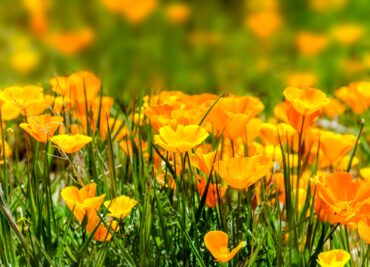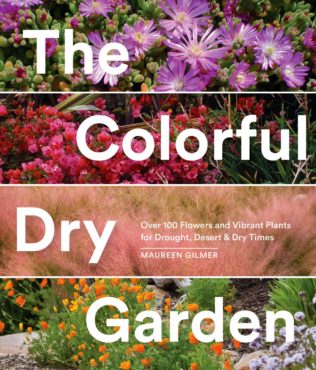
Editor’s note: This excerpt was adapted from “The Colorful Dry Garden,” used by permission of Sasquatch Books.
The word ephemeral defines anything that lives for just a short time. It’s often used to define annual flowering plants, which grow from seed, mature, flower and set new seed within a single growing season.
Annual wildflowers are by far the best example of ephemeral plants yet are among the most misunderstood and underappreciated garden plants for drought. Do not confuse these with perennial wildflowers, which are slower to germinate and more difficult to establish from seed.
The American West is home to a huge range of wildflowers that come and go during their brief show in spring. California poppy and Texas bluebonnet are among quintessential spring flowers of this rugged country that make fine spring color for dry gardens without asking for much or any irrigation. Many of these species are adapted to very poor soils, cliff faces and rocky ground, where they experience less competition than they would in fertile grassy lowlands.
Seven Reasons Wildflower Sowings Fail
Old seed: Always buy new seed each year and store it in a cool, dry place until you’re ready to sow. Some species have a limited period of viability and may not survive more than a year in storage.
Wrong seed: Failure to plant wildflowers adapted to your local climate can cause widespread failure of germination, stunted seedlings, disease and pest attacks. Strive to grow several local native wildflowers to ensure they are well adapted, and only then experiment with new options so you don’t risk the whole stand.
 Seed covered too deeply: Don’t cover this seed; just lightly rake it into soft ground for optimal coverage and quick germination.
Seed covered too deeply: Don’t cover this seed; just lightly rake it into soft ground for optimal coverage and quick germination.
Soil too rich: Many wildflowers prefer porous, well-drained soils. This is why they are found on sloping ground, often on south-facing inclines. Small annual lupine often grows densely along road edges, where they root into the base gravel. This reduces competition from needier plants and allows runoff to quickly penetrate to feed fast-growing roots.
Competing plants: Some wildflowers cannot survive competition. It’s usually caused by more demanding plants like greedy grasses and aggressive exotic weeds that shade the flowers and invade their root zone.
It’s important to control weeds the season before to reduce competition before sowing. Failing to do so means you’ll have to handpick the weeds, if you can spot them among the desirable seedlings that may appear identical to the untrained eye.
Seeds sown too late: Sowing wildflowers in the late fall just before the rainy season begins is crucial to those species that germinate in winter and develop larger root systems for adaptation to hot, dry climates.
Wildlife: Birds, rabbits and many other forms of wildlife love your seed, and unless properly covered or protected with mulch or fencing, it may be gobbled up during the lean months. This is the biggest drawback to sowing too early.
Red corn poppies (Papaver rhoeas), a wildflower of Europe, grow in wheat fields because they love to germinate in disturbed soils. In France, trench warfare of World War I fertilized poppies with the blood of thousands, resulting in an epic crop of poppies after the armistice.
This demonstrates that poppies and many other wildflowers prefer to be sowed into scarred, plowed, ripped or newly cleared ground, where they germinate easily compared to packed, established earth. Seeds thrown onto irregular ground filter down into the nooks and crannies, where rain quickly covers them with a thin layer of soil. Moisture also remains in these pockets to keep seedlings adequately hydrated in open ground.
Tip: Whenever you disturb a lot of ground, from grading a home site to the first tilling of a new backyard, sow wildflowers for beauty and erosion control. Get the kids involved with broadcasting seed. They will be excited when it all explodes into bloom.
Sowing wildflowers doesn’t just result in beautiful flowers; it helps provide soil coverage, erosion control and a huge buffet of nectar for insects and hummingbirds.

























